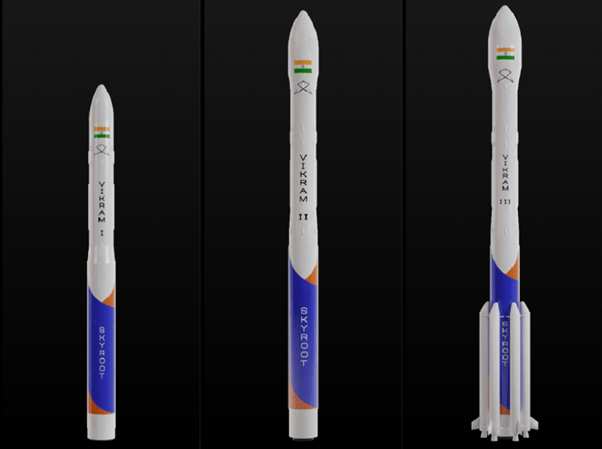Science and Technology
In news: On November 18, 2022, Hyderabad-based Skyroot Aerospace scripted history by becoming the first private Indian organisation to launch a rocket from Indian Space Research Organisation (ISRO)’s launchpad in Sriharikota.
Vikram S rocket:

- It is a part of Mission Prarambh, which means the beginning.
- It is a sub-orbital rocket, which reached outer space and then splashed into the sea.
- Has payload capacity of up to 300 kilograms.
- Vikram-S used solid fuel-ammonium perchlorate, which is not completely green fuel.
- With Vikram-2, it is planned to use liquefied natural gas (LNG), which is greener compared with traditional kerosene fuel.
Mechanisms of Vikram S:
- There are four spin thrusters, which will generate the rocket’s spin and stability so that it doesn’t deviate from the trajectory.
- Max-Q is the maximum stress on the rocket and is experienced during the lift-off.
- At around 23 seconds, the rocket achieves five times the speed of sound or Mach 5.
- ‘Apogee’ is the maximum point after which it descends, falls back and splashes down into the sea.
- It takes around two and a half minutes to reach the Apogee and another two and a half minutes to splash down.
Technologies used:
- carbon composites: porous structure made of carbon and carbon fibre and four times lighter and has higher strength than steel.
- The lighter the rocket, the more payload we can use.
- 3D printing: reduces the cycle time by 90 per cent compared with traditional methods and allows to build complex shapes.
- Cycle time is the time required to manufacture a component.
- Cost-effectiveness
- Efficient technology
- Utilising existing govt infrastructure
- Operating out of India
About Skyroot Aerospace:
- It is an Indian private aerospace manufacturer and commercial launch service provider headquartered in Hyderabad.
- Mandates: cutting-edge innovation and cost-effectiveness
- Next launch will be Vikram-1, an orbital vehicle that puts satellites into orbit.
- Vikram-2 will have a higher capacity than Vikram-1.
- Skyroot Aerospace focuses on reusability of rockets.
Source: DTE
Previous Year Questions
Q.1) With reference to India’s satellite launch vehicles, consider the following statements: (2018)
- PSLVs launch the satellites useful for Earth resources monitoring whereas GSLVs are designed mainly to launch communication satellites.
- Satellites launched by PSLV appear to remain permanently fixed in the same position in the sky, as viewed from a particular location on Earth.
- GSLV Mk III is a four-staged launch vehicle with the first and third stages using solid rocket motors; and the second and fourth stages using liquid rocket engines.
Which of the statements given above is/are correct?
-
- 1 only
- 2 and 3
- 1 and 2
- 3 only













